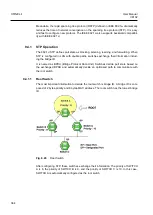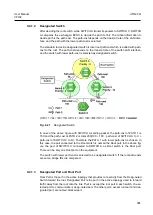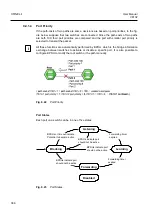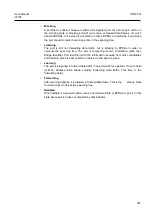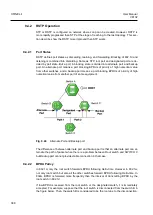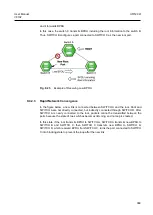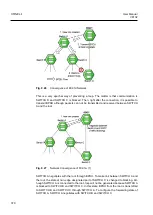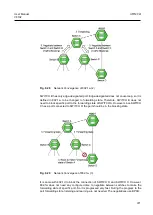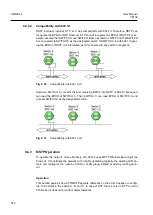
User Manual
UMN:CLI
V8102
361
9.3.10.6
Displaying Queue Status
To display the traffic statistic information on each queue, use the following command.
Command
Mode
Description
show
queue-status
{
giga-
bitethernet
|
tengigabitether-
net
|
gpon
}
IFPORT
{
unicast
|
non-unicast
}
Enable
Global
Interface
[XE/GE/GPON]
Shows the information of queue status on the
interface.
show queue-status cpu
Shows the CPU queue cell information and
packet usage.
9.3.10.7
Random Early Detection (WRED)
The V8102 supports Weighted Random Early Detection (WRED) which can selectively
discard lower priority traffic when an interface gets congested. WRED provides differenti-
ated performance characteristics for different classes of service. It minimizes the impact
of dropping high priority traffic. WRED is based on the RED algorithm.
RED, which utilizes end-to-end flow-control of TCP, is a random packet dropping function
when traffic reaches the user-given threshold even before it reaches maximum buffer size.
If traffic amount reaches maximum buffer size, all packets can be dropped, which makes
packet loss. Therefore, in order to prevent packet loss or unstable traffic transmission,
user can restrict excessive traffic over buffer size by setting up a threshold. With RED
function, packet loss is reduced and stable packet transmission can be acquired.
One of the drawbacks to implement RED function is that it randomly drops a large num-
ber of packets, and is easy to drop high priority of packets. Unlike RED, WRED is not as
random when dropping packets. WRED combines the capabilities of the RED algorithm
with the IP precedence feature to provide for preferential traffic handling of high-priority
packets.
To utilize WRED function, a start queue length value, end queue length value and drop
probability are necessary.
–
WRED min-threshold (start queue length value)
is the starting point of random
packet dropping.
–
WRED max-threshold (end queue length value)
is the point of complete drop-
ping.
–
drop probability
indicates the percentage of packet dropping from the starting
point of random packet dropping to the point of complete dropping. .
If probability is a large value, the amount of packets would be dropped. Therefore com-
plete dropping point is slowly reached. On the other hand, if probability is small, a small
amount of packets would be dropped. Therefore complete dropping point is quickly
reached. If the probability value is 1, dropping packet would be none and the value is 100,
all packets would be discarded from the point of start queue length value is reached.


















